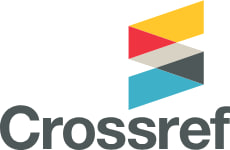Marketing capabilities and their role in supporting customer containment activities - an analytical study of the opinions of employees in the marketing department at the men’s clothing factory in Najaf.
Keywords:
marketing capabilities, customer involvement, marketAbstract
The purpose of the research to explore the role that marketing capabilities can play in supporting customer involvement activities, given that marketing capabilities play an important role in contributing to improving customer relations and achieving their requirements, as well as reaching new markets that enhance the competitiveness of organizations in the field of business.
The research attempts to find solutions to the problem of not investing the marketing capabilities available in organizations appropriately, which negatively affects the involvement of customers .
Three dimensions were adopted to measure the independent variable of marketing capabilities (Market sensing capability, market learning capability, market targeting capability).
The research also relied on three dimensions to measure the dependent variable Customer involvement (Responsiveness, Fulfilment, Enjoyment).
The men's clothing factory was selected in Najaf as a field of research as one of the leading laboratories in the industrial sector. Since the subject of the research focuses on the marketing aspects in a large way, the questionnaire forms were distributed to the marketing department staff in the lab as a sample to search in a deliberate manner. For statistical analysis in order to reach the search results, , and tested the hypotheses of correlation and impact between the variables of research through the formulas and statistical means necessary for that showed the acceptance of hypotheses at the macro level and at the level of dimensions.
The study concluded with a set of results based on the findings of the research, which pointed to the marketing capabilities that can contribute to the Customer involvement. The research recommended a set of recommendations, including the necessity of organizations to provide the appropriate regulatory conditions and procedures that enhance the development of their capabilities and marketing abilities, Widely.
References
- Bailey, C. (2013). Competing in low-income markets using dynamic and adaptive market sensing capabilities (Doctoral dissertation, University of Pretoria).
- Barney, J. (1991). Firm resources and sustained competitive advantage. Journal of management, 17(1), 99-120.
- Bhargava, M., Chatterjee, R., Grimpe, C., & Sofka, W. (2011, October). Marketing Innovation and R&D Capabilities–More Than One Way to Innovation Success?. In 3rd European Conference on Corporate R&D and Innovation CONCORD-2011, Seville, Spain.
- Brock Kai-Uwe, J., & Zhou Yu, J. (2012). Customer intimacy. Journal of Business & Industrial Marketing, 27(5), 370-383.
- Bruni, D. S., & Verona, G. (2009). Dynamic marketing capabilities in Science‐based firms: An exploratory investigation of the pharmaceutical industry. British Journal of management, 20(s1)..
- Chiu, C. M., Chang, C. C., Cheng, H. L., & Fang, Y. H. (2009). Determinants of customer repurchase intention in online shopping. Online information review, 33(4), 761-784.
- Cowles, D. L. (1997). The role of trust in customer relationships: asking the right questions. Management Decision, 35(4), 273-282.
- Day, G.S. (1994), .The Capabilities of market-driven Organisations., Journal of Marketing, Vol.58, October, p.37.51.
- Eng, T.Y & Spickett-Jones, J.G. (2009), .An investigation of marketing capabilities and upgrading performance of manufacturers in mainland China
- Guan, J., & Ma, N. (2003). Innovative capability and export performance of Chinese firms. Technovation, 23(9), 737-747.
- Gummerus, J., Liljander, V., Pura, M., & Van Riel, A. (2004). Customer loyalty to content-based web sites: the case of an online health-care service. Journal of services Marketing, 18(3), 175-186.
- Hauser, J., Tellis, G. J., & Griffin, A. (2006). Research on innovation: A review and agenda for marketing science. Marketing science, 25(6), 687-717.
- Ibrahim, A. M. A. (2017). The Interaction Effect of Market Sensing and Internal Market Orientation on Organizational Capabilities and Marketing Performance (Doctoral dissertation, Sudan University of Science and Technology).
- Jun, M., Yang, Z., & Kim, D. (2004). Customers' perceptions of online retailing service quality and their satisfaction. International Journal of Quality & Reliability Management, 21(8), 817-840.
- Kanagal, N. (2009). Role of relationship marketing in competitive marketing strategy. Journal of Management and Marketing Research, 2, 1.
- Kotabe, M., Srinivasan, S.S. and Aulakh, P.S. (2002) .Multinationality and firm performance: the moderating role of R&D and marketing capabilities.Journal of International Business Studies Vol.33, No.1, p.79.97.
- Lagrosen, S. (2005). Customer involvement in new product development: A relationship marketing perspective. European Journal of Innovation Management, 8(4), 424-436.
- Landua, I. (2008). Gaining competitive advantage through customer satisfaction, trust and confidence in consideration of the influence of green marketing.
- Levitas, E., & McFadyen, M. (2009). Managing liquidity in research‐intensive firms: signaling and cash flow effects of patents and alliance activities. Strategic Management Journal, 30(6), 659-678.
- Li, Y., Li, G., & Feng, T. (2015). Effects of suppliers’ trust and commitment on customer involvement. Industrial Management & Data Systems, 115(6), 1041-1066.
- Lundkvist, A., & Yakhlef, A. (2004). Customer involvement in new service development: a conversational approach. Managing Service Quality: An International Journal, 14(2/3), 249-257.
- Moon, H., Johnson, J. L., Mariadoss, B. J., & Cullen, J. B. (2018). Supplier and Customer Involvement in New Product Development Stages: Implications for New Product Innovation Outcomes. International Journal of Innovation and Technology Management, 1850004.
- Morgan, N. A. (2012). Marketing and business performance. Journal of the Academy of Marketing Science, 40(1), 102-119.
- Mu, J. (2015). Marketing capability, organizational adaptation and new product development performance. Industrial Marketing Management, 49, 151-166.
- Nambisan, S. (2002). Designing virtual customer environments for new product development: Toward a theory. Academy of Management Review, 27(3), 392-413.
- Nicolajsen Westh, H., & Scupola, A. (2011). Investigating issues and challenges for customer involvement in business services innovation. Journal of Business & Industrial Marketing, 26(5), 368-376.
- Okten, D. U. Y. G. U. (2013). Enabling marketing and innovation capability in the digital economy (Doctoral dissertation, Bournemouth University).
- Ponder, N., Ponder, N., Bugg Holloway, B., Bugg Holloway, B., Hansen, J. D., & Hansen, J. D. (2016). The mediating effects of customers’ intimacy perceptions on the trust-commitment relationship. Journal of Services Marketing, 30(1), 75-87.
- Saunders, M. N., & Thornhill, A. (2003). Organisational justice, trust and the management of change: An exploration. personnel Review, 32(3), 360-375.
- Song, M., Benedetto, A. D., & Nason, R. W.(2007), .Capabilities and financial performance:The moderating effect of strategic type., Journal of the Academy of Marketing Science, 35,18-34
- Sukdej, S., & Ussahawanitchakit, P. (2015). Dynamic marketing capability and marketing survival: evidence from auto parts businesses in Thailand. The Business & Management Review, 7(1), 177.
- Swaminathan, A. (2014). Marketing capabilities, innovation and firm performance, Graduate Theses and Dissertations. Paper 13712. , Iowa State University.
- Vorhies, D. W. and Morgan, N. A. (2005), .Benchmarking Marketing Capabilities for Sustainable Competitive Advantage., Journal of Marketing,Vol.69 (1), p.80-94.
- Wolfinbarger, M., & Gilly, M. C. (2003). eTailQ: dimensionalizing, measuring and predicting etail quality. Journal of retailing, 79(3), 183-198.
- Yim, C. K., Tse, D. K., & Chan, K. W. (2008). Strengthening customer loyalty through intimacy and passion: Roles of customer–firm affection and customer–staff relationships in services. Journal of marketing research, 45(6), 741-756.
- Zhu & Chen,(2012),"Service fairness and customer satisfaction in internet banking",Internet Research, Vol. 22 Iss 4 pp. 482 – 498
- Zollo, M. and Winter, S. G. (2002). Deliberate Learning and the Evolution of Dynamic Capabilities. Organization Science, Vol. 13, No. 3, pp. 339-351.

Downloads
Published
How to Cite
Issue
Section
License
Copyright (c) 2024 Economics and Administration College - Karbala University

This work is licensed under a Creative Commons Attribution-NonCommercial-NoDerivatives 4.0 International License.
Authors retain the copyright of their papers without restrictions.









